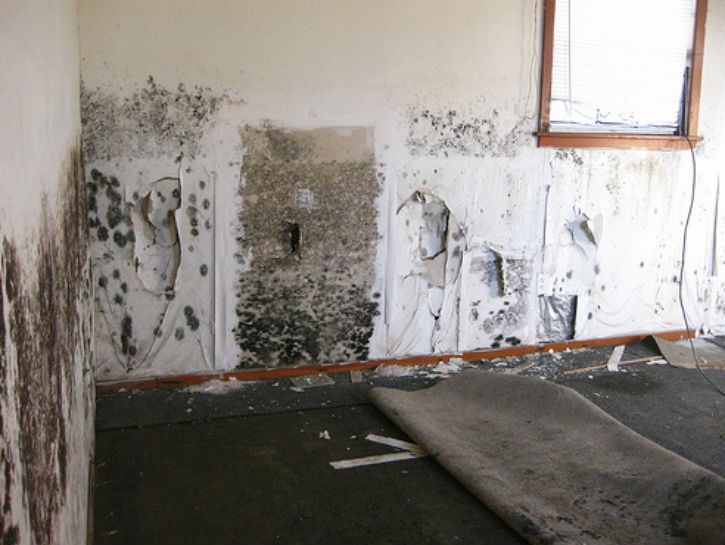The Difference Between Mold and Mildew
Many think that mold and mildew are one in the same, but even though they may seem similar, they are actually quite different. Both are fungi who love warm, damp areas, and they can grow on a plethora of surfaces. However, there are subtle differences that occur with color, texture, and size.
Mold is a fungus that sprouts tiny spores that float through the air and land wherever they please — usually in damp places. There are various kinds of mold in nature, and many are important to our ecosystem because they aid in the decomposition of organic materials.
According to the Centers for Disease Control and Prevention (CDC), “no one knows how many species of fungi exist, but estimates range from tens of thousands to perhaps three hundred thousand or more. Molds grow best in warm, damp, and humid conditions, and spread and reproduce by making spores.”
With most types of mold in your home, you will see it develop as the spores reproduce and form clusters or colonies, and you will notice a musty odor. Mold can start to grow on damp surfaces within hours and can destroy the material it is growing on. If you have water damage in your home because of things like flooding, sewage backup, or plumbing and roof leaks, it only takes 24 to 48 hours for mold to develop after water exposure.
Mildew is one of the most common types of mold, and you will find it on damp surfaces like on walls and in showers, among a variety of other places. Mildew looks like tiny black spots, and you can get rid of it easily with a mold-killer and a cleaning brush.
So the main difference, according to the Federal Emergency Management Agency (FEMA), is that mildew is early-stage mold that is less harmful and easier to treat than fully grown mold.

What’s The Damage?
Damp walls, carpet and flooring, basements, and heating and cooling appliances can be breeding grounds for mold, and an infestation can cause permanent damage to your home, as well as your health. When you have an overgrowth of mold or mildew in your home, you can breathe in the spores, and that can cause allergic reactions with symptoms like sneezing, coughing, skin rashes, eye redness, and the onset of asthma.
People with weakened immune systems (like those receiving cancer treatments or taking medicines that suppress the immune system) can have more severe reactions to mold that include fever, difficulty breathing, and lung infections.
Luckily, you can easily remove mildew from your home, and it is also relatively simple to properly treat a mold infestation.
Dealing With Mold
If your mold growth is in a small area, you can remove it from hard surfaces with a store-bought mold remover, soap and water, or a mixture of bleach and water. Remember to always wear a mask and rubber gloves, and you also need to protect your eyes with goggles. You also want to make sure that the area is well-ventilated by opening windows and doors.
Let the cleaning solution sit on the area for at least ten minutes before rinsing it with water and letting it dry. You will also need a wet-dry vacuum to remove excess water.
Before you tackle the whole infestation, start by cleaning a small test patch. It is possible you will need to hire a professional to do the work. And if the infected area is larger than ten square feet, you probably don’t want to tackle the job yourself. It is quite possible that the mold has made its way into your electrical wiring, furnace ducts, or drywall.
However, if you do attempt the job on your own, be cautious because when you are cleaning and disinfecting mold, it can release more spores when you disturb it. Also, make sure to throw away wet items like clothing, toys, bedding, or furniture that is in the mold-infected area.
Cleaning Up Mildew
With mildew, you can use the bleach mixture (one cup bleach and one gallon of warm water) and a cleaning brush to remove it in the bathroom, and then rinse it after it sits for a few minutes. Don’t forget to turn on the vent fan when you are finished. For wood furniture, first vacuum up any loose spores (just remember to throw away the bag or clean the collection container), and then remove the mildew with dishwashing detergent and water.
For fabric, rinse off the item with warm water and then lay it out in the sun until it is completely dry. While outside, use a wire brush to remove spores before covering it in bleach and letting it soak in the washing machine for at least thirty minutes.

Mold And Mildew Prevention
Your bathroom and kitchen are the most likely areas for mold and mildew to grow because of the damp surfaces. So, keep the surfaces as dry as possible, and keep your washing machine open between uses so it can air out.
A dehumidifier can also help prevent mold and mildew, with the ideal humidity level being between 40 and 50 percent.
Also, keep the air in your home circulating and change your air filters regularly. If you can, use an indoor air purifier to help keep mold spores out of the air.
Taking these steps can help prevent mold and mildew in your home, and also remember to keep a lookout — especially in damp areas — because if you catch it early, mold and mildew are much easier to treat.
